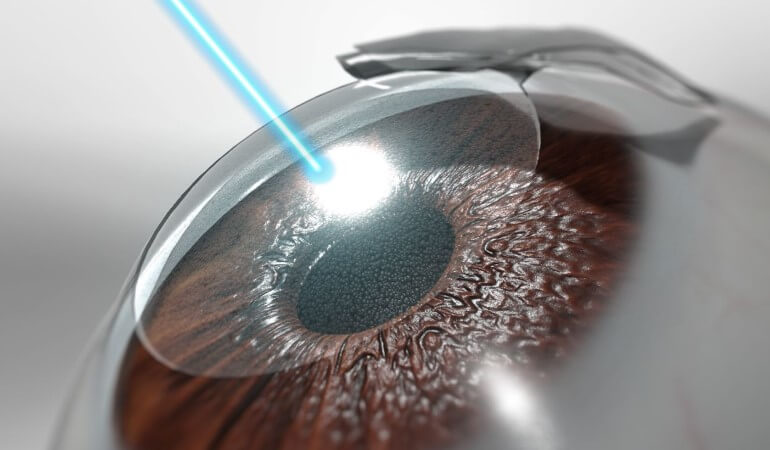Services
Providing complete and trusted eye care for all ages with advanced technology and expert care
Phacoemulsification Surgery, commonly known as Phaco Surgery, is a modern, minimally invasive technique used to treat cataracts—a condition where the natural lens of the eye becomes cloudy, leading to blurry vision.
The term "phacoemulsification" comes from the Greek word "phakos", meaning lens. This advanced procedure involves breaking up (emulsifying) the cloudy natural lens using ultrasound waves, and then gently suctioning it out through a very small incision (usually 2-4 mm). Once the cataractous lens is removed, a foldable intraocular lens (IOL) is implanted in its place to restore clear vision.

Refractive eye surgery helps you see clearly without needing glasses or contact lenses. It corrects common vision problems like nearsightedness, farsightedness, astigmatism, and age-related blurry vision by reshaping the eye or replacing its lens. Popular methods include LASIK, PRK, SMILE, and lens surgeries like ICL and RLE, offering clear and lasting vision.
You may be eligible if you’re 18 or older and your eyesight has stayed the same for at least a year. Your eyes should be healthy, with a strong cornea, and you should not have problems like dry eyes, glaucoma, or other eye conditions. Pregnant or breastfeeding women are usually advised to wait. An eye doctor will check your eyes to see if the surgery is safe for you.
LASIK : is the most popular method. It reshapes the cornea using a laser after creating a small flap.
PRK : doesn’t need a flap—it removes the outer corneal layer before using a laser, ideal for people with thinner corneas.
SMILE : is a gentle, minimally invasive procedure that removes a small piece of tissue through a tiny cut, offering quick healing and fewer side effects.
If laser surgery isn’t suitable, ICL and RLE are lens-based options that place an artificial lens inside the eye for clearer vision.
No, refractive surgery is usually painless. Numbing eye drops are used before the procedure, so you might feel just a bit of pressure or a mild sensation, but not pain. After surgery, some people may have dryness, irritation, or slight discomfort—especially with PRK, which takes a bit longer to heal. These effects are temporary and can be managed with eye drops and proper care.
Refractive surgery is quick and efficient, usually taking just 10 to 20 minutes per eye. The actual laser work in procedures like LASIK or SMILE takes only a few seconds. Including preparation and post-checks, you might spend a couple of hours at the clinic. Even though it's fast, advanced laser technology makes the results precise and comfortable.